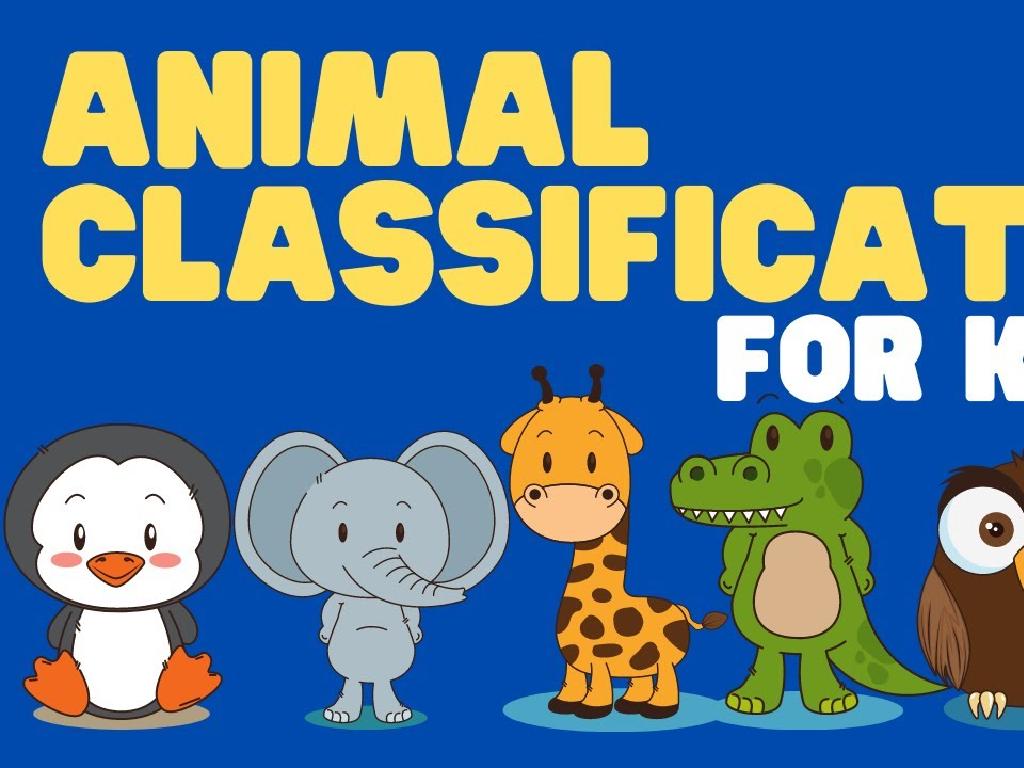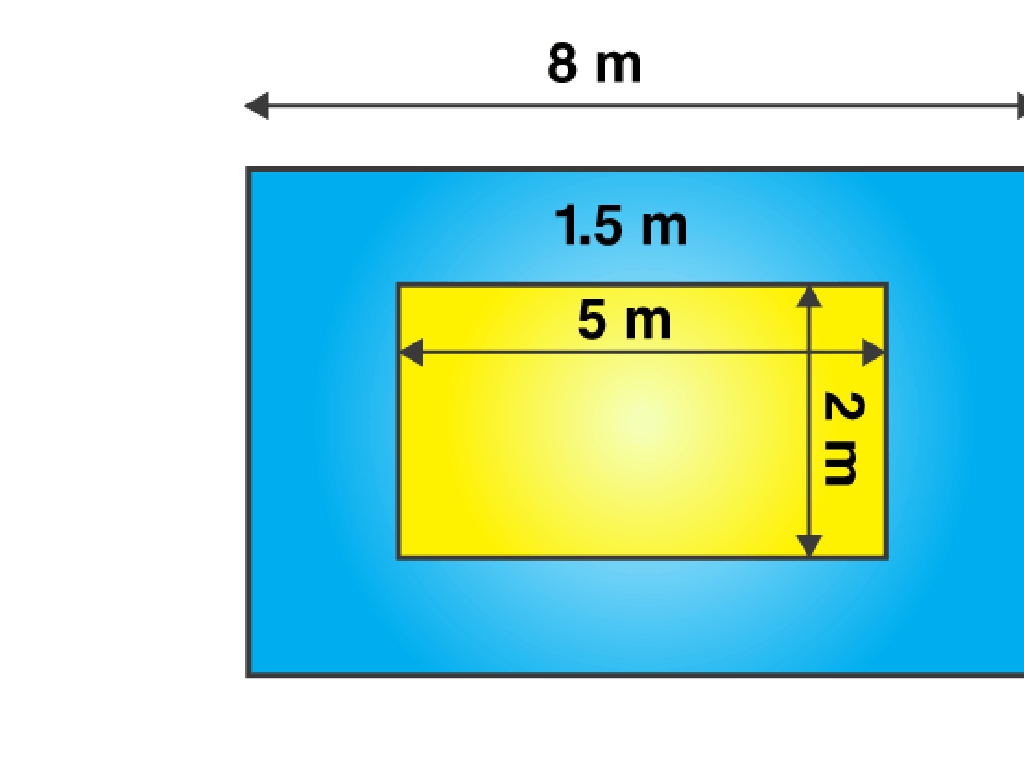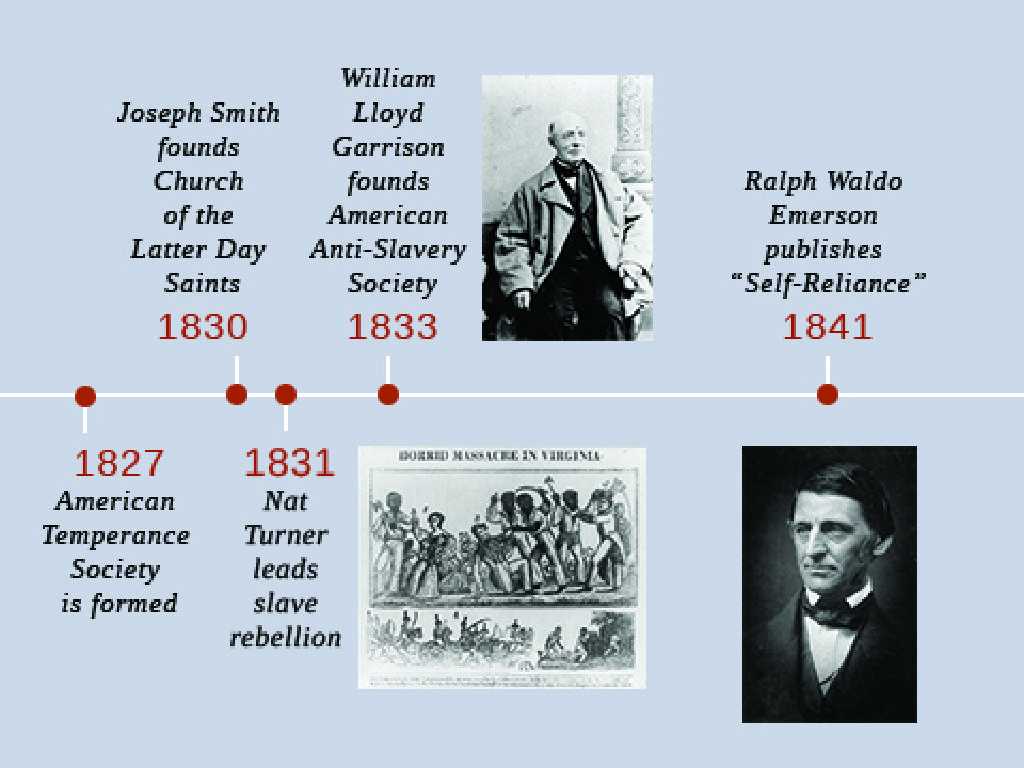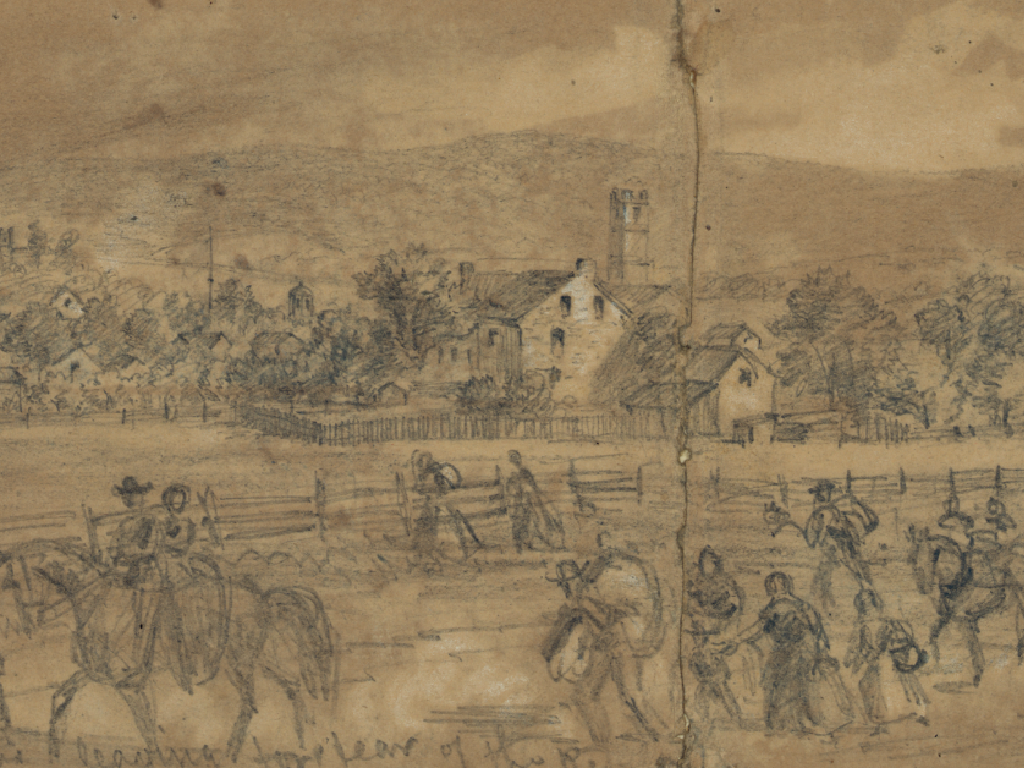Fractions Of A Number: Word Problems
Subject: Math
Grade: Fifth grade
Topic: Multiply Fractions And Whole Numbers
Please LOG IN to download the presentation. Access is available to registered users only.
View More Content
Fractions of a Number: Word Problems
– Understanding fractions as parts
– A fraction represents a part of a whole, like a slice of pizza.
– Recap on multiplication basics
– Reviewing how to multiply numbers quickly and accurately.
– Today’s focus: Word problems
– Applying fractions to find parts of numbers in story problems.
– Solving real-world problems
– Use fractions to solve problems you might encounter every day.
|
Begin with a brief review of what fractions are, emphasizing that they represent parts of a whole, which can be anything from a pizza to a group of people. Then, recap the basics of multiplication as it’s essential for understanding how to multiply fractions with whole numbers. The main focus of today’s lesson is on word problems involving fractions of a number. Provide students with real-world examples where they apply their knowledge of fractions and multiplication to solve problems. For instance, if someone eats 1/4 of a 20-slice pizza, how many slices did they eat? Encourage students to visualize the problem, break it down into steps, and solve it. The goal is to help students feel comfortable with fractions in a way that relates to their everyday experiences.
Visualizing Fractions of a Number
– Understanding fractions of a number
– Taking a fraction of a number means dividing the number into equal parts and counting some of them.
– Pie slices as visual fractions
– Imagine a pie cut into equal slices. Each slice represents a fraction of the whole pie.
– Real-life fraction applications
– Fractions are everywhere: in cooking, dividing money, or measuring.
– Practice with word problems
|
This slide introduces the concept of taking a fraction of a number, which is a foundational skill in understanding fractions. Use the analogy of slicing a pie to help students visualize fractions as parts of a whole. Relate the concept to real-life situations where fractions are used, such as in recipes or dividing items between people. Encourage students to think of their own examples. Conclude with word problems to apply what they’ve learned, ensuring to provide clear instructions and examples to guide them through the process. This will help solidify their understanding and demonstrate the practical use of fractions in everyday life.
Multiplying Fractions by Whole Numbers
– Steps to multiply fractions by whole numbers
– Multiply the numerator by the whole number and keep the same denominator.
– Example: Calculating 1/2 of 8
– 1/2 of 8 equals 4 because 1/2 times 8 equals 8/2, which simplifies to 4.
– Practice Problem: 3/4 of 12
– What is 3/4 of 12? Multiply 3 by 12 and divide by 4.
|
This slide introduces the concept of multiplying fractions by whole numbers, which is a key skill in understanding fractions in real-world contexts. Start by explaining the steps: multiply the numerator (top number of the fraction) by the whole number, and keep the denominator (bottom number) the same. Then simplify if necessary. Use the example of 1/2 of 8 to show this process in action. For the practice problem, guide students to apply the same method to find 3/4 of 12, reinforcing the concept. Encourage students to visualize the problems with drawings or objects, and provide additional practice problems to solidify their understanding.
Solving Word Problems: Fractions of a Number
– Understand the problem’s context
– Read carefully to grasp what’s being asked
– Find the key information given
– Look for numbers, fractions, and the question
– Apply fraction multiplication
– Use the method: multiply the whole number by the numerator of the fraction
– Solve and check your answer
– Ensure the solution makes sense with the problem
|
This slide is aimed at teaching students a systematic approach to solving word problems involving the multiplication of fractions and whole numbers. Start by reading the problem thoroughly to understand the scenario. Next, identify the important information such as the numbers, fractions, and what is being asked. Teach students how to multiply a whole number by the numerator of the fraction while keeping the denominator the same. After finding the answer, students should check if it logically fits the context of the problem. Encourage students to practice with different word problems and guide them through the process until they feel confident.
Fraction Word Problems: Sharing and Planting
– Pizza Party Problem
– If a pizza is cut into 8 slices and 4 friends share it equally, how many slices does each get?
– Flower Garden Query
– If 1/4 of a garden is planted with tulips and the garden has 20 sections, how many sections have tulips?
– Solving with Multiplication
– Understanding Fractions
|
This slide presents two practical applications of multiplying fractions with whole numbers through word problems. For the pizza party, students will divide the total number of slices by the number of people to find out how many slices each person gets. In the flower garden problem, students will multiply the fraction of the garden that is planted with tulips by the total number of sections to find out how many sections contain tulips. These examples help students understand how multiplication of fractions and whole numbers can be applied to real-life situations. Encourage students to visualize the problems and draw models if necessary. Discuss the importance of understanding the problem context to apply the correct mathematical operation.
Class Activity: Fraction Scavenger Hunt
– Group activity: find classroom objects
– Determine real-life fractions
– If 1/2 of a set is 5, the whole set is 10 objects.
– Share findings with the class
– Discuss how you found the fractions with peers.
– Reflect on the activity
– Think about what was learned and any challenges faced.
|
This interactive activity is designed to help students apply their knowledge of fractions to real-life situations. Divide the class into small groups and have them find various objects around the classroom. Then, challenge them to determine fractions of numbers associated with these objects, such as ‘What is 1/3 of the total number of books on the shelf?’ Afterward, each group will share their findings with the class, explaining their thought process and how they calculated the fractions. This will not only reinforce their understanding of fractions but also enhance their collaborative and communication skills. As a teacher, be prepared to guide them through the process, provide hints if necessary, and ensure that each group participates. Possible activities could include finding fractions of pencil counts, book quantities, or even the number of tiles on the floor.
Fraction Multiplication: Practice Time
– Solve worksheet problems individually
– Discuss solutions with the class
– Strategies for solving fraction problems
– Break down complex problems, use visual aids like pie charts
– Q&A session to clear doubts
– Ask questions if you’re unsure about the problems
|
This slide is aimed at reinforcing the students’ understanding of multiplying fractions with whole numbers through practice. Provide a worksheet with a variety of word problems that require students to apply the concept of fraction multiplication. After individual work, lead a class discussion where students can explain their problem-solving strategies, fostering a collaborative learning environment. Introduce different strategies like drawing models or simplifying fractions before multiplying. Conclude with a Q&A session, ensuring that students have the opportunity to address any uncertainties or difficulties they encountered. The goal is to build confidence and proficiency in solving fraction multiplication problems.
Homework and Lesson Recap: Fractions Practice
– Solve additional word problems
– Tackle problems involving multiplying fractions by whole numbers.
– Review today’s fractions lesson
– Go over the methods we learned for finding fractions of numbers.
– Remember, practice is key
– Bring questions to next class
– Any difficulties? Write them down to discuss!
|
For homework, students are assigned more word problems to reinforce their understanding of multiplying fractions with whole numbers. This task will help solidify the concepts taught in today’s lesson. Remind students that consistent practice is essential for mastering mathematical skills. Encourage them to review the steps we’ve covered and to approach each problem methodically. In the next class, we will address any questions or challenges they encountered, so they should come prepared to discuss their homework. This will not only help them but also provide valuable feedback on teaching effectiveness.






